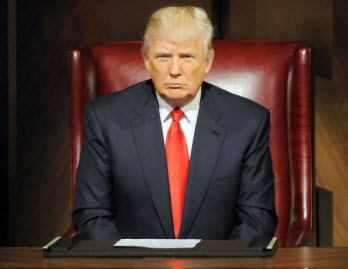How Trump Should Regulate the Internet

President-elect Donald Trump’s transition team has yet to publish a technology policy and, as a candidate, the business executive said little about the subject.
The Republican platform called for a reversal of the Federal Communications Commission’s controversial 2015 decision to apply outdated public utility regulations to broadband providers. But on the campaign trail, Trump was also critical of the announced merger of AT&T and Time Warner Inc., which he threatened to block. His team has since named three critics of the FCC’s net-neutrality order to oversee the agency’s transition.
The truth is nobody really knows. With virtually nothing to go on, speculation about the new administration’s approach to technology is mostly just hot air rushing to fill a vacuum.
So perhaps the better question is: How should the new administration approach digital innovation?
The short answer: Cautiously.
The Internet, media and content industries are already in the midst of a significant transformation. Just look at what has happened in the past few months. Soon after the AT&T-Time Warner deal and Verizon’s pending acquisition of Yahoo, CenturyLink acquired Internet backbone provider Level 3 Communications.
Then, Google Fiber announced a sudden halt to nationwide expansion. Earlier this month, word came that Comcast will offer direct access to Netflix through the cable provider’s X1 software platform. Just last week, AT&T rolled out an online-streaming video service called DirecTV Now.
The source of all this disruption is technological innovation unleashed by the Internet, which gradually and then suddenly replaced disparate networking and distribution platforms with a single digital standard. One system is now capable of transmitting data, voice, video and other content over a combination of wired and mobile communications systems.
As a result, the communications, technology and media industries are being squeezed together, even as their individual supply chains are being pulverized and reconstructed.
Traditional media companies are competing with Internet-based streaming services that offer original content, including Amazon, Netflix, Apple, Hulu and user-produced programming from YouTube. At the same time, broadcast, satellite, cellular, cable, copper and fiber-based Internet providers find their separate services mutating into a single infrastructure, bringing some wired companies into both competition and collaboration with their own mobile offerings.
But digital convergence hasn’t simply changed the roster. It has changed the nature of competition. The emerging information sector is experiencing a sped-up version of what Harvard business professor Michael Porter long ago described as the “five forces,” which extend the impact of industry competition to include not just direct rivals but also pressure from a company’s suppliers, customers, disruptive startups and companies offering equivalent goods using new technologies.
In the communications and media worlds, these forces were kept at bay by legal barriers dating back 100 years. But the Internet has broken down all those barriers and then some, creating a dynamic Internet ecosystem that constantly recreates itself.
Amazon, for example, is suddenly a major infrastructure company as well as a leading provider of original entertainment content.
One side effect: Traditional communications providers, as Frost & Sullivan principal analyst Dan Rayburn puts it, “don’t want to be dumb pipes anymore.”
In that context, the AT&T-Time Warner deal looks less like a straightforward (if large) combination of content and communications assets — similar to the successful 2011 merger of Comcast and NBCUniversal — and more like the next chapter in the former telephone company’s ongoing reinvention.
Facing intense competition in its existing broadband, mobile and TV businesses from a variety of alternatives, AT&T hopes that acquiring the film and TV properties of Time Warner — notably HBO, CNN and Warner Bros. — will give it not only better cash flow but also more opportunities to combine its growing portfolio of assets with new innovations, particularly in mobile, to offer shared services to consumers.
These developments should all give the Trump White House pause. Why? In the final years of President Obama’s administration, regulators eager to ensure their own future relevance have inadvertently made things worse. The FCC in particular raced to cement traditional broadband and broadcast competition by limiting the ability of access providers to offer new services within the narrow and now meaningless classifications of an obsolete law.
As industries and technology converge, consequently, providers eager for growth are now forced to look outside the box. The Time Warner deal, along with Verizon’s takeover of Yahoo and Comcast’s new partnership with former adversary Netflix, dramatically highlight the unintended results.
For now, at least, as Frost & Sullivan’s Rayburn notes, “content is king.” And while consumers care more about who has the programs they want than the technology that delivers them, it’s also true that regulators have pressed a heavy thumb to the scale, making consumer and enterprise broadband less attractive businesses going forward. Content may be king in part because everything else has been reduced to the level of a pawn.
So as the Trump administration belatedly prepares its technology policy, the best Silicon Valley and its customers worldwide can hope for is a recognition that slow-moving regulators, even with the best of intentions, can do very little good trying to shape a digital revolution already in progress.
As new interns are told on their first day in the emergency room: “Don’t just do something. Stand there.”
Larry Downes is project director at the Georgetown Center for Business and Public Policy. This column was published originally by The Washington Post.
Multichannel Newsletter
The smarter way to stay on top of the multichannel video marketplace. Sign up below.



